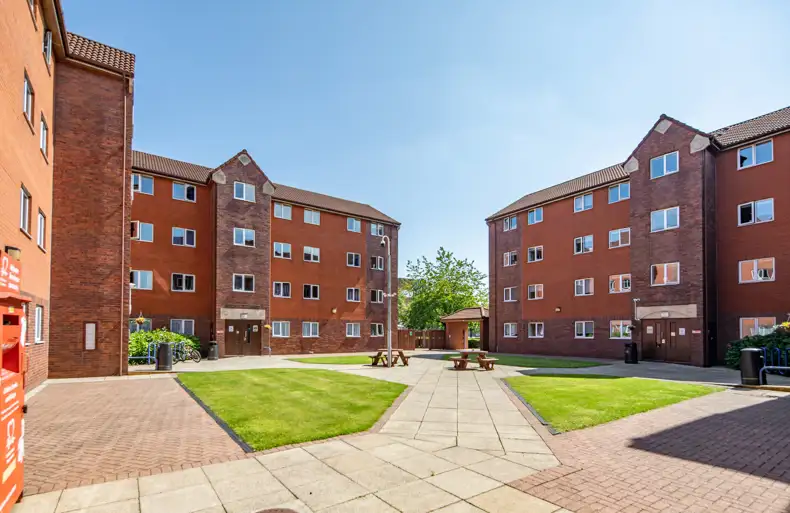Blog | Student Housing
Does scale affect the value of PBSA?

When we are appraising student accommodation for the purposes of sale, four factors commonly determine appropriate yield: macro location, micro location, building quality and deal structure.
We are often asked whether there is justification for a yield shift for ‘type’ i.e. differentiating between studio and cluster accommodation. It is hard to give a definitive answer because it may be relevant in some locations, such as where there is a clear imbalance of supply. But as a general rule, we can say that determining yield by the type of accommodation on offer should not be a default position. There is also a fifth major factor affecting a student asset’s value that is often overlooked: the scale of an opportunity – the number of beds and subsequent lot size.
“put simply, there is less demand for smaller PBSA investment opportunities”
So, why is this? After all, there are many fine examples of smaller PBSA developments and, operationally, there is nothing to suggest larger-scale developments outperform smaller schemes. Put simply, there is less demand for smaller PBSA investment opportunities, so we see a softening of yields for buildings offering fewer beds.
As a result, we simply cannot adopt the yield achieved on the sale of a 350-bed scheme for a development of, say, 70 beds in the same city. In theory, yields should be comparable – but this is not how it is in reality. To better understand the problem, let us think about it in numbers. As a hypothetical example, imagine that a capital value of £90,000 per bed is an appropriate metric for student accommodation in Sheffield. Applied over 350 rooms, this equates to a GDV of £31.5M. It is very much in institutional investment territory, which largely underpins the private ownership of PBSA in the UK. This capital can be deployed directly by the pension funds themselves or via private equity outfits, like Blackstone, but it is safe to say there is liquidity in the market for investments of this scale.
Applying the same value per bed to the 70-bed scheme equates to a value of £6.3M. The asset is saleable, but the buyer profile is less obvious. There is not enough scale for institutional investment, yet it is a big-ticket size for local or regional investors. Thus, the lot size falls between the cracks. There are other factors at play, too. Smaller buildings can be more expensive to operate, requiring a greater gross to net margin. And the return hurdles are different for smaller scale investors, because the cost of capital is higher.
Another point to consider is this: if scale is impacting interest levels and it is therefore justifiable to reflect this in value, is value being driven by the number of beds, or by capital value? On the ground, it feels like a combination of both. Some buyers need to exercise larger amounts of capital, but the driving factor is the number of bedrooms. The sale of Calico in Liverpool recently caught my attention: 780 beds achieving 5.80% NIY, which is a great example of scale hardening yield. For a development of less than 100 beds in Liverpool, you can take this yield out by 0.75%+ because this would be a fairer reflection of market expectation. In fact, in some instances, there is as much as 100bps difference between the yield applicable to large-scale PBSA and the yield applicable to smaller scale PBSA in the same city.
As a rule of thumb, the table below provides an indication of the yield shifts by asset size we are witnessing across a broad range of student sales. Analysis such as this needs to be treated with caution because there will always be anomalies. Such is the established nature of student accommodation in the UK, it is difficult to make an argument that is relevant and correct for the whole market. But, broadly speaking, there is enough market evidence to support these parameters.

In super-prime regional locations such as Bristol, Bath, Oxford and Cambridge, demand for opportunities means some investors will look to adopt a slightly different strategy of building quantum by the acquisition of multiple smaller buildings. Demand for smaller assets is therefore bolstered and the yield shift minimised. The largest differentials can be seen in prime regional and good regional locations because these markets offer a depth of opportunities for scale. Yields in secondary and tertiary markets are drifting somewhat and, given these are relatively high for student accommodation in the first instance, the value gap between smaller and larger opportunities begins to close up.
The market appears to be waking up to the opportunities presented by smaller PBSA – particularly, the apparent value and potential for yield compression to headline levels. But demand is still stronger for larger scale opportunities and any change in sentiment is yet to carry an impact. Smaller scale PBSA therefore provides a strong investment case and opportunities to achieve more attractive returns even in some of the UK’s more soughtafter locations.

Northern Residential Property Transactions 2024 & Market Update
Take a look at the properties we sold in 2024 and read our market updates.

Allsop brings prime Bolton PBSA scheme to market
Uniquely positioned as the University of Bolton’s only approved accommodation for a further 15 years, the scheme presents a c...

Podcast: £100M of auction sales and is it time to diversify into the Student sector?
George Walker, Commercial Auctioneer and Richard Adamson, Residential Auctioneer are also joined in the studio by Anthony Har...

A student landlord’s perspective on The Renters’ Reform Bill
The Renters’ Reform Bill is causing student HMO landlords some concern. The reoccurring conversations we’re having with our c...